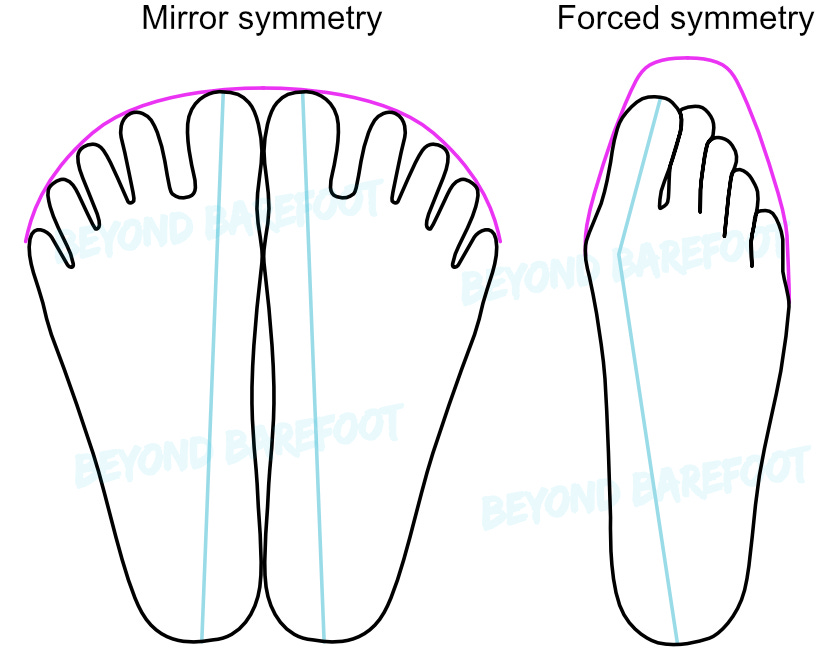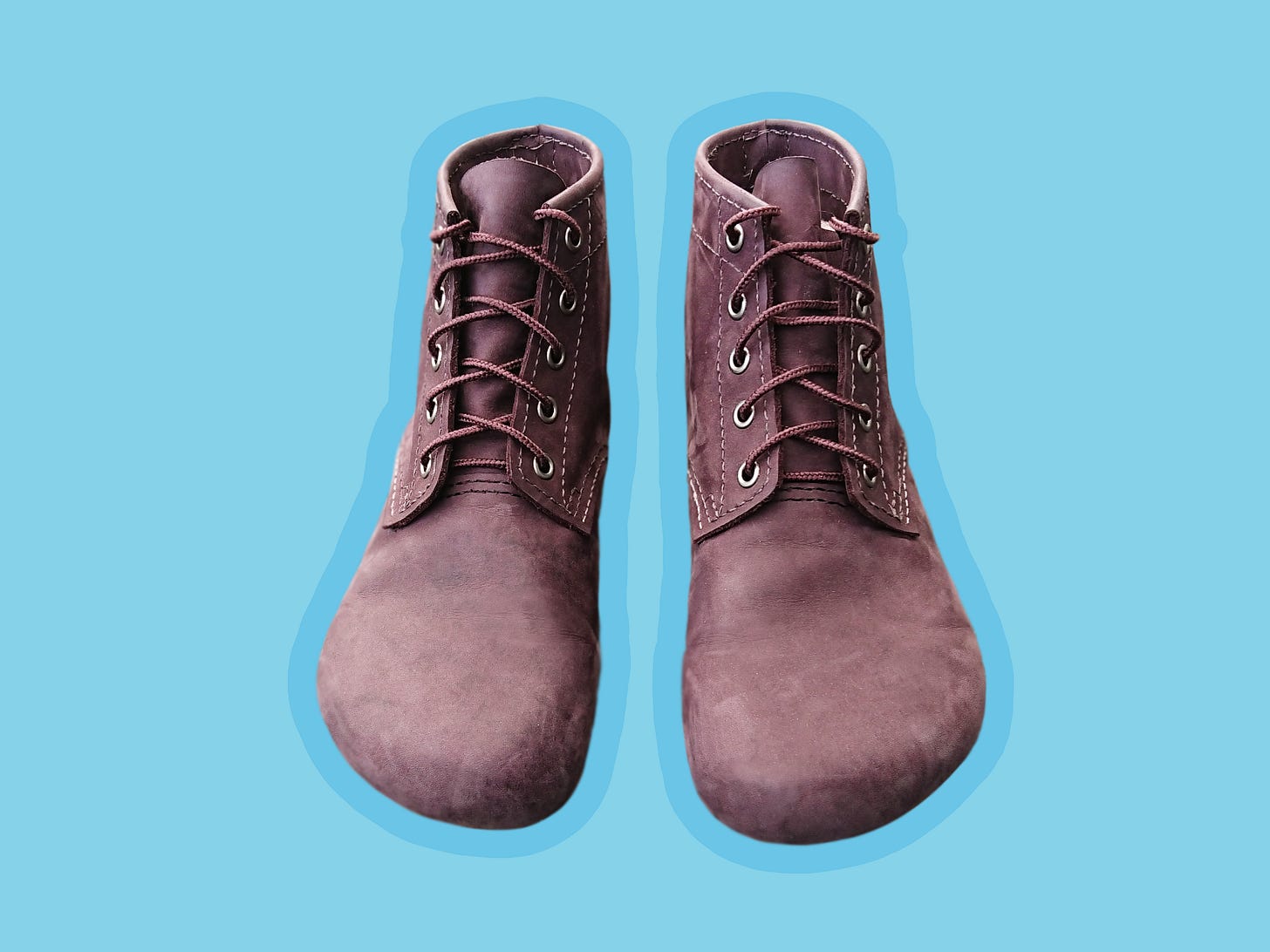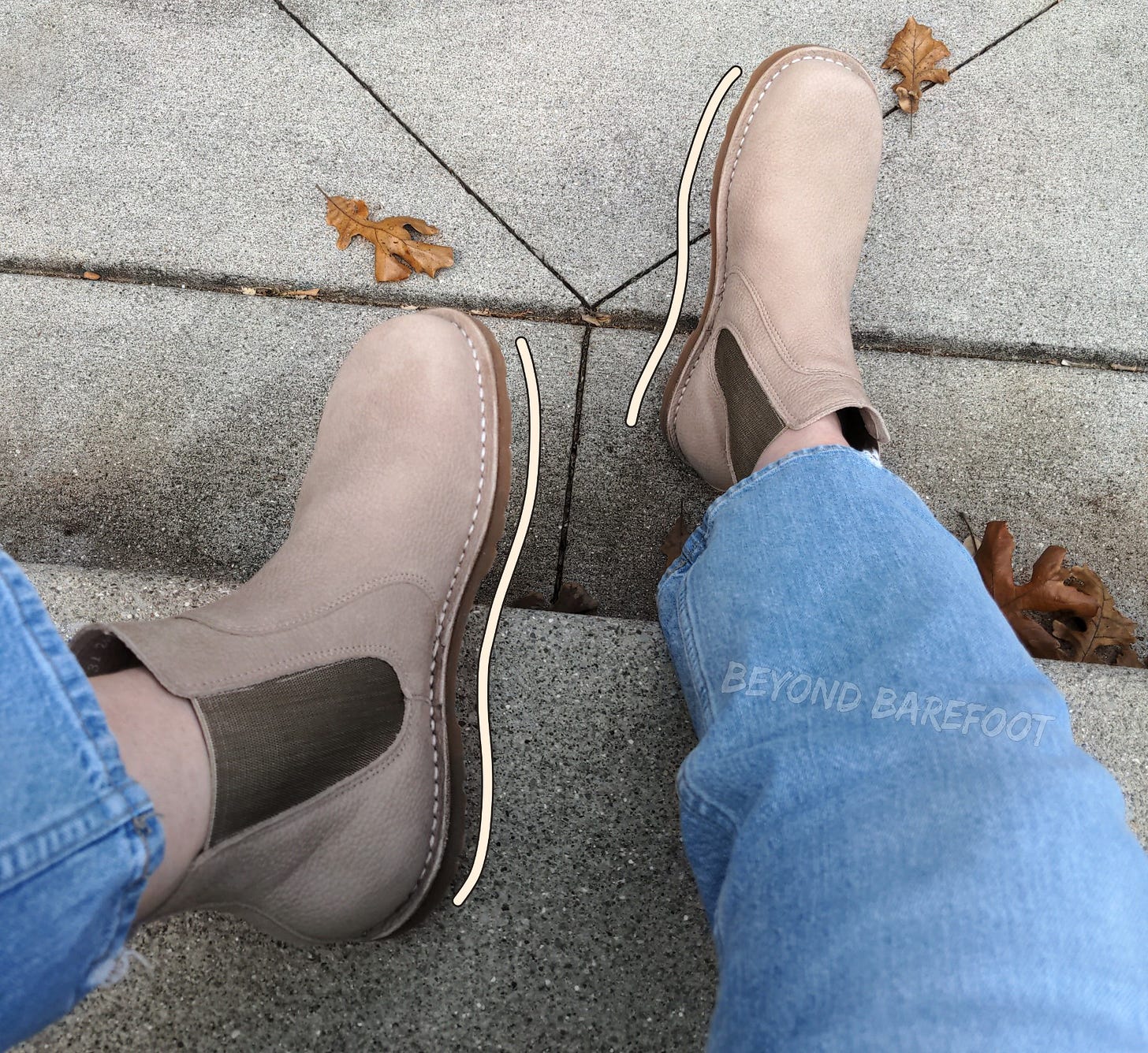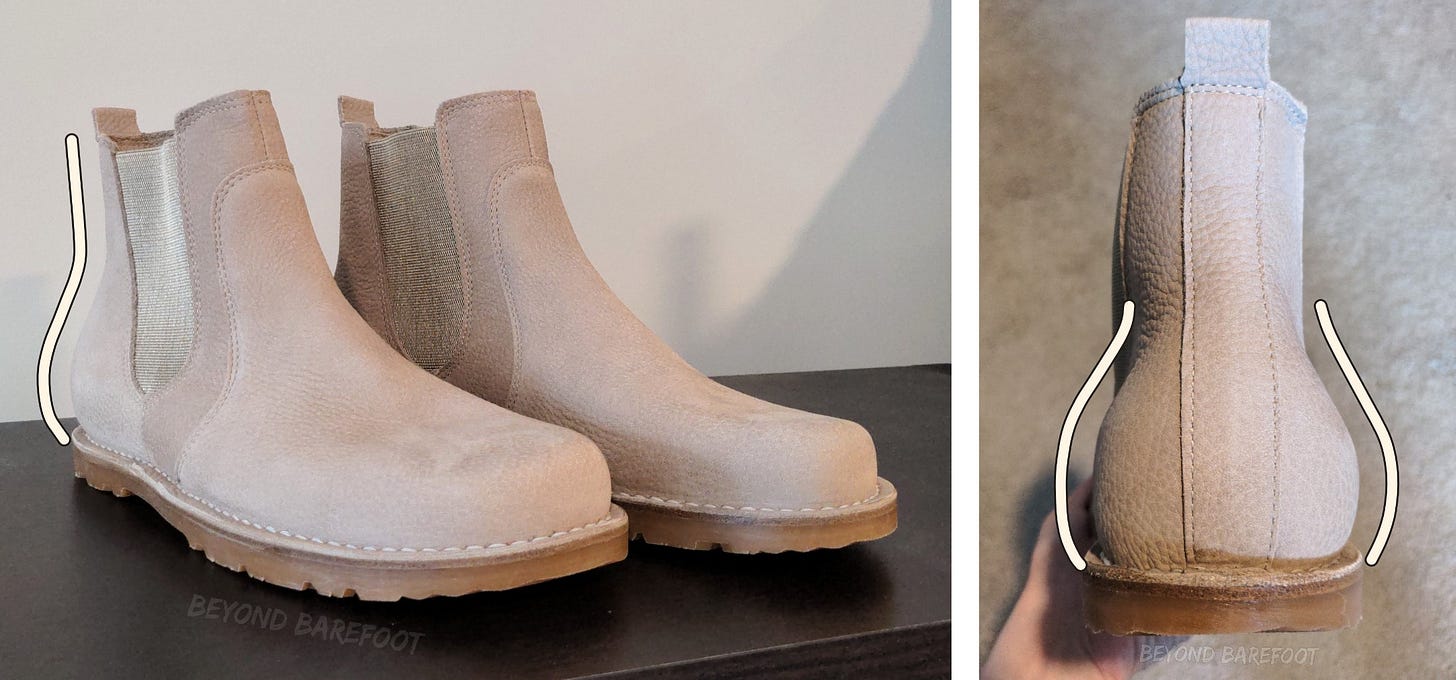(I’ll be using the terms “barefoot” and “zero drop” interchangeably in this article.)
When people have their first encounter with barefoot shoes, it’s not uncommon for them to think the shoes look pretty funky—and usually not in a good way. But why is that? The shape of the toe box is obviously a big reason, but that alone doesn’t tell the full story. In this series, I’ll lay out some of the reasons many barefoot shoes look, well, frumpy.
Lack of intentionality
A standard bit of advice for dressing fashionably is to make all the pieces you’re wearing look intentional. The specific style doesn’t matter; regardless of whether you’re aiming for a look that’s sleek and elegant or more on the whimsical side of things, what matters is intentionality, and you can usually tell in an instant if a person’s outfit looks cohesive or haphazard.
Shoes set the tone of the outfit. An oft repeated fashion maxim is to “start with the shoes” and build from there. Think of the visual difference when you see someone wearing a suit paired with dress shoes or sneakers. Barefoot shoes just don’t look like conventional shoes (for several reasons), so unless a person understands this and dresses with that in mind, the whole thing is going to look “off.”
Setting aside how footwear can affect your overall ensemble, it seems to me that barefoot shoes are often lacking intentionality in the way they’re designed. In fact, they rarely look designed. They look like someone slapped a few pieces of leather together and called it a day.
To be blunt, a lot of barefoot shoes look like they were created by people who haven’t studied footwear design. That might sound harsh, but I don’t think it’s far from the truth. Barefoot shoes are frequently lacking in several design elements that not only add style, but in some cases actually serve a practical purpose from a functionality standpoint. At the end of the day, I think this apparent lack of intentionality underpins nearly all the other reasons barefoot shoes look odd.
The lasts
A last is the forme on which shoes are made; they’re essentially little sculptures that give shoes their shape. Lasts can be clunky or elegant, and this will be reflected in the resulting shoe. Unfortunately, a lot of barefoot shoes are made on crudely shaped lasts.
Lasts are complex 3D objects that have slight variations depending on the style of footwear they’re intended for. Even a subtle change in the contours can make a big difference in the look and feel of the shoe.
Because barefoot shoes have certain limitations regarding the toe shape and the heel height, it’s even more important that they’re made on well-crafted lasts to add finesse. This seems to be one area where barefoot shoe creators are vastly underutilizing the tools at hand.
Heels are ubiquitous on most footwear styles and I think some of the last contours are being lost in translation when designers set out to make zero drop versions. Most of the zero drop lasts I’ve seen are kind of blocky.
For a while, I was beginning to doubt if it was even possible to have a good-looking zero drop boot because heels are such an integral visual aspect of boots. When I discovered the Austrian brand GEA Waldviertler a lightbulb went off in my head. This was the first real example I’d seen of completely flat boots that actually looked good. One reason for this is due to the contours on the lasts Waldviertler uses.
In the photos below, I’ve traced some of the contour lines on my Waldviertler Mustang boots so they’re easier to spot.
These contours help hold the foot in place and add visual interest; they’re either absent or less defined on other zero drop footwear.
The profile on a lot of barefoot shoes is also kind of shapeless. Compare the two illustrations below. The first is a silhouette I’ve regularly seen on barefoot boots, while the second illustration shows a much more shapely profile.
Again, the lack of contours on the barefoot example creates functional issues. As brought up previously, if the toe box has a gradual slope at the end, it needs to be much longer than the foot so there’s enough space above the big toe. It’s not uncommon to see the toe box on barefoot shoes slope down too quickly while also being very short. If the upper is thin and pliable, this might result in temporary discomfort, but if the shoe is made of an unyielding material, this can put a lot of pressure on top of the big toe and cause ingrown toenails and other things.
Additionally, the back curve is sometimes too straight on barefoot boots. A defined back curve is yet another contour that helps secure the foot.
The toe box
Yes, there’s no denying that foot-shaped toe boxes play a big part in making barefoot shoes look weird, but as we’ve seen, it’s not the only reason. I’ve written on toe box shapes before, but this time I’m going to approach the subject from a slightly different angle.
Barefoot shoe proponents have done a lot of work in the past few years advocating for foot-shaped shoes. While it’s true that the toe box on conventional shoes can be harmful, this strict insistence on footiness has really muddied the waters.
The way we frame this discussion greatly affects our thinking on what’s possible. An important distinction I’d like to get across is that the trouble with most shoes is not that they aren’t “foot-shaped.” The actual problem is that the toe box is often too short, too narrow, and too symmetrical. This might sound pedantic, but the implications of this statement can make a big difference in the way we design our shoes. Most shoes have some combination of these things, and the worst have all three.
When we understand the root of the problem, we can easily recognize that the solution is to make the toe box wider, longer, and less symmetrical.
A healthy human foot is not symmetrical. The only real symmetry comes when looking at both feet side-by-side. Viewed in isolation the shape of the foot is kind of odd, but when you place both feet together they form a mirrored symmetry, like the wings of a butterfly. Instead of working with this natural symmetry, footwear designers attempt to force it on each individual foot when creating toe box shapes. To this end, designers begin tapering the toe box at the ball of the foot, resulting in the big toe being pushed out of alignment and an overall crowding of the toes.

We don’t have to wear shoes that literally look like feet, but our shoes do need to respect the foot in order to avoid causing damage. Below is an example of a shoe that fully embraces mirror symmetry. Although I assume this is a bit avant-garde for most people’s tastes, it’s clear that there’s intentionality behind every aspect of the design.
Another fun example that tickles me is the Japandal, released by Puma in 2003. Of course, shoes don’t need to be quite this asymmetrical. The toe box can even have some tapering if it’s long and wide enough and doesn’t push on the toes. Many shapes become possible when you increase the length. If you have concerns about tripping in a longer shoe, I’ve addressed that here.
Increasing the toe box length isn’t a novel idea. If you look at bespoke footwear, the toe box is often much longer than you’ll find on factory-made shoes. In this example, approximately one third of the toe box length is empty space. Ignoring the fact that the toes in the linked image are a bit cramped, the point here is that there’s nothing unusual about having this extra space at the end of your shoes.
Foot-shaped toe boxes are really only necessary for people who don’t like wearing longer shoes. I suspect this is one reason people get into barefoot shoes in the first place; perhaps they’ve always worn shoes with a very close fit (which is likely one reason they develop foot problems). When they realize more toe space is necessary they’ll embrace a wider toe box, but strongly resist wearing longer shoes. I’ve repeatedly seen people reject perfectly healthy shoes simply because they weren’t “foot-shaped.” It seems that shoes can sometimes be so well designed that they fly over the heads of the target audience.
Shoemakers are fond of using the phrase “the last comes first,” which signifies the importance of lasts in the shoemaking process. But a better saying would be “the foot comes first.” It may not have quite the same ring to it, but I think it would do a lot to reinforce the right idea. Foot health should take priority over everything else in footwear design, but I don’t think we have to completely sacrifice style in the process. Our shoes don’t have to be ugly—we just need them to be more thoughtfully designed.
I’ve delved into a few of the reasons barefoot shoes look weird, but rest assured, there are more. Read part two here.













